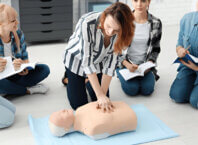With more and more people suffering from various health ailments, the need for assistance is also growing. Many people also find it difficult to move around. With problems come solution and patient hoists have brought a much needed relief to patients and also to their families. Patient hoists can help a wide range of different people, from elderly who have difficulty moving around and also people with a disability that are unable to lift themselves fully.
Providing 24 hour assistance to patients is becoming increasingly difficult especially in homes where most of the members are on a full time job. Patient hoists are a mechanical device for lifting a person from a sitting position and also allows them to move freely. If you are planning to get a patient hoist, make sure you do your research well. Here we will list the different kinds of patient hoists:

- Mobile hoists: It is a wheeled hoist and is free standing. It helps in the transportation of a person from one place to another, the harness or the sling suspended from an arm provides balance. The patient can then be hoisted up and the hoist is completely wheeled into a new destination before the person is lowered. The mobile hoists are apt for homes where there is enough free space. As the wheeled base of a hoist is broad so that it remains stable, there is the need of wide paths for its movement. Also, the accommodation of the mobile hoist must be looked into. This is especially suited for people who have enough space for movement and accommodation.
- Stationary hoists: They are usually placed on the wall or the floor, while the base of the hoist is fixed; the support arm can help in the transfer of a person from one location to another. The most crucial factor that you should keep in mind before installing a stationary hoist is to gauge the strength of the wall or floor you want to attach the equipment in. There needs to be enough space for a smooth transfer of patients from one part of the room to another.
- Ceiling hoists: The ceiling hoist is the most favorable option from among the other patient hoists. The hoists are mounted to the ceiling on a track. The patient is lifted in the sling and moved along the track. It is run on electricity, and before you install this, make sure you check if your ceiling will be able to support the track. The installation will require the guidance of experts as there needs to be connected to multiple rooms.
These are some of the most common types of patient hoists:
If you are planning to purchase one for a family member or a friend, you must firstly list down the requirements. There might be an array of patient hoists in the market; however, you must be clear on what will suit your patient best. Here we will list a few factors that you should keep in mind before choosing a patient hoist:
- Type of sling: There are a variety of slings that can be altered as per your requirement. Whether you need a full body sling or one that is used to be able to sit upright or the special slings that are used during showers or in the swimming pool. Select the one that suits you best.
- Space: Make sure you have enough space to accommodate your patient hoist. It is delicate equipment and if not positioned correctly might do more harm than good.
Keep the above points in mind!







